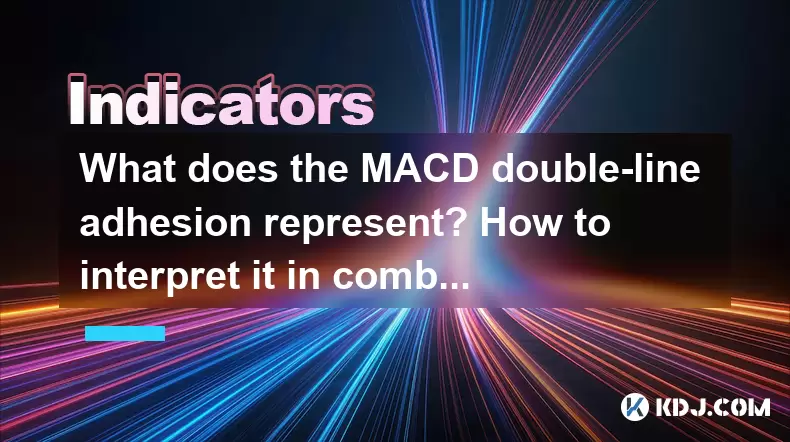-
 Bitcoin
Bitcoin $119600
0.45% -
 Ethereum
Ethereum $4671
8.16% -
 XRP
XRP $3.250
2.78% -
 Tether USDt
Tether USDt $0.9999
0.01% -
 BNB
BNB $838.0
3.17% -
 Solana
Solana $198.5
12.77% -
 USDC
USDC $0.9997
-0.01% -
 Dogecoin
Dogecoin $0.2396
6.18% -
 TRON
TRON $0.3547
2.21% -
 Cardano
Cardano $0.8583
9.20% -
 Chainlink
Chainlink $24.42
13.29% -
 Hyperliquid
Hyperliquid $44.08
1.42% -
 Stellar
Stellar $0.4492
2.37% -
 Sui
Sui $3.915
6.09% -
 Bitcoin Cash
Bitcoin Cash $612.9
3.02% -
 Hedera
Hedera $0.2627
5.34% -
 Ethena USDe
Ethena USDe $1.000
-0.03% -
 Avalanche
Avalanche $24.94
7.83% -
 Litecoin
Litecoin $132.6
10.48% -
 Toncoin
Toncoin $3.439
1.39% -
 UNUS SED LEO
UNUS SED LEO $9.212
2.34% -
 Shiba Inu
Shiba Inu $0.00001371
4.89% -
 Uniswap
Uniswap $11.54
1.13% -
 Polkadot
Polkadot $4.211
7.67% -
 Dai
Dai $0.9998
-0.03% -
 Cronos
Cronos $0.1649
-1.62% -
 Ethena
Ethena $0.7975
-1.46% -
 Pepe
Pepe $0.00001235
9.15% -
 Bitget Token
Bitget Token $4.445
0.46% -
 Aave
Aave $323.7
8.18%
What does the MACD double-line adhesion represent? How to interpret it in combination with the trend strength indicator?
MACD double-line adhesion signals potential momentum shifts in crypto markets; use with ADX, RSI, and OBV for better trading decisions.
Jun 04, 2025 at 12:22 pm

The MACD (Moving Average Convergence Divergence) double-line adhesion is a crucial concept within technical analysis in the cryptocurrency market. This phenomenon occurs when the MACD line and the signal line converge closely, indicating a potential shift in market momentum. Understanding this concept in conjunction with trend strength indicators can significantly enhance a trader's ability to make informed decisions. In this article, we will delve into the specifics of MACD double-line adhesion, how to interpret it, and how to use it alongside trend strength indicators to improve trading strategies.
What is MACD Double-Line Adhesion?
MACD double-line adhesion refers to the situation where the MACD line and the signal line come very close to each other, often touching or crossing multiple times within a short period. This indicates that the momentum of the asset's price movement is weakening, and a potential reversal or continuation of the trend may be imminent. Traders often look for this adhesion as a precursor to significant price movements.
The MACD line is calculated by subtracting the 26-period exponential moving average (EMA) from the 12-period EMA. The signal line, on the other hand, is a 9-period EMA of the MACD line. When these two lines converge, it suggests that the short-term momentum (12-period EMA) is aligning closely with the longer-term momentum (26-period EMA), creating a scenario where traders need to be particularly vigilant.
How to Identify MACD Double-Line Adhesion
Identifying MACD double-line adhesion requires careful observation of the MACD chart. Here are the steps to recognize this phenomenon:
- Open your trading platform and navigate to the chart of the cryptocurrency you are analyzing.
- Add the MACD indicator to the chart. Most trading platforms allow you to do this by selecting the indicator from a list of available technical analysis tools.
- Observe the MACD line and the signal line. Look for instances where these two lines come very close to each other or cross multiple times within a short timeframe.
- Mark the periods of adhesion on your chart. This can be done manually or by using charting software that allows you to highlight specific areas.
By following these steps, traders can effectively identify MACD double-line adhesion and prepare for potential market shifts.
Interpreting MACD Double-Line Adhesion
Interpreting MACD double-line adhesion involves understanding the implications of the lines' convergence. When the MACD line and the signal line adhere closely, it suggests that the current trend may be losing steam. Here are some key points to consider:
- Potential Reversal: If the adhesion occurs after a prolonged uptrend or downtrend, it could signal that the trend is about to reverse. Traders should look for other signs of reversal, such as bearish or bullish divergence, to confirm this.
- Trend Continuation: Conversely, if the adhesion happens within a well-established trend, it might indicate a brief consolidation period before the trend continues. In this case, traders should watch for a breakout from the consolidation range.
- Volatility Reduction: The adhesion often coincides with reduced volatility, as the market's momentum wanes. Traders should be cautious during these periods, as breakouts can be sudden and significant.
Combining MACD Double-Line Adhesion with Trend Strength Indicators
To enhance the effectiveness of MACD double-line adhesion analysis, traders often combine it with trend strength indicators. These indicators help gauge the robustness of the current trend and can provide additional context to the MACD signal. Some popular trend strength indicators include the Average Directional Index (ADX), the Relative Strength Index (RSI), and the On-Balance Volume (OBV).
Here’s how to interpret MACD double-line adhesion in combination with these indicators:
Average Directional Index (ADX)
The ADX measures the strength of a trend, regardless of its direction. When the ADX is above 25, it indicates a strong trend, while values below 20 suggest a weak or non-existent trend.
- Strong Trend with Adhesion: If the ADX is above 25 and the MACD lines adhere, it might suggest a brief pause in a strong trend. Traders should watch for a breakout to continue the trend.
- Weak Trend with Adhesion: If the ADX is below 20 and the MACD lines adhere, it indicates a lack of strong directional movement. Traders should be cautious and look for other signs of trend direction.
Relative Strength Index (RSI)
The RSI measures the speed and change of price movements, oscillating between 0 and 100. Values above 70 indicate overbought conditions, while values below 30 suggest oversold conditions.
- Overbought/Oversold with Adhesion: If the RSI is above 70 or below 30 and the MACD lines adhere, it could signal an impending reversal. Traders should look for confirmation from other indicators or price action.
- Neutral RSI with Adhesion: If the RSI is between 30 and 70 and the MACD lines adhere, it suggests a potential consolidation or continuation of the current trend. Traders should monitor the RSI for any shifts towards overbought or oversold levels.
On-Balance Volume (OBV)
The OBV measures buying and selling pressure by adding volume on up days and subtracting volume on down days. An increasing OBV suggests bullish pressure, while a decreasing OBV indicates bearish pressure.
- Bullish OBV with Adhesion: If the OBV is trending upwards and the MACD lines adhere, it suggests that the bullish trend may continue after a brief pause. Traders should watch for a breakout to confirm this.
- Bearish OBV with Adhesion: If the OBV is trending downwards and the MACD lines adhere, it indicates that the bearish trend may persist. Traders should look for a breakdown to validate this.
Practical Application of MACD Double-Line Adhesion and Trend Strength Indicators
To illustrate the practical application of combining MACD double-line adhesion with trend strength indicators, let's consider a hypothetical trading scenario involving Bitcoin (BTC).
Scenario: You notice that the MACD line and signal line for BTC are adhering closely, indicating a potential shift in momentum. You decide to check the trend strength indicators for further confirmation.
Step 1: Check the ADX. If the ADX is above 25, it suggests a strong trend. If the ADX is below 20, it indicates a weak trend.
Step 2: Examine the RSI. If the RSI is above 70 or below 30, it suggests overbought or oversold conditions, respectively. If the RSI is between 30 and 70, it indicates a neutral market.
Step 3: Analyze the OBV. If the OBV is trending upwards, it suggests bullish pressure. If the OBV is trending downwards, it indicates bearish pressure.
Decision: Based on the readings from these indicators, you can make an informed decision. For example, if the ADX is high, the RSI is neutral, and the OBV is bullish, you might anticipate a continuation of the bullish trend after the MACD adhesion. Conversely, if the ADX is low, the RSI is overbought, and the OBV is bearish, you might expect a reversal.
By combining these indicators, traders can gain a more comprehensive view of the market and make more accurate predictions about future price movements.
Frequently Asked Questions
Q1: Can MACD double-line adhesion occur in both bullish and bearish markets?
Yes, MACD double-line adhesion can occur in both bullish and bearish markets. The key is to interpret the adhesion within the context of the current trend and other technical indicators. In a bullish market, adhesion might signal a brief pause before the trend continues, while in a bearish market, it could indicate a consolidation before further declines.
Q2: How often should I check for MACD double-line adhesion?
The frequency of checking for MACD double-line adhesion depends on your trading strategy and time frame. For short-term traders, checking the MACD indicator multiple times a day might be necessary. For long-term investors, checking daily or weekly charts might be sufficient. It's essential to align the frequency with your trading goals and risk tolerance.
Q3: Are there other indicators that can be used in conjunction with MACD double-line adhesion?
Yes, besides the ADX, RSI, and OBV, other indicators that can be used with MACD double-line adhesion include the Stochastic Oscillator, Bollinger Bands, and the Parabolic SAR. Each of these indicators provides additional insights into market momentum, volatility, and potential reversals, enhancing the overall analysis.
Q4: How reliable is MACD double-line adhesion as a standalone signal?
MACD double-line adhesion is not highly reliable as a standalone signal because it can occur frequently and does not always lead to significant price movements. It is best used in conjunction with other technical indicators and price action analysis to increase its reliability and accuracy in predicting market shifts.
Disclaimer:info@kdj.com
The information provided is not trading advice. kdj.com does not assume any responsibility for any investments made based on the information provided in this article. Cryptocurrencies are highly volatile and it is highly recommended that you invest with caution after thorough research!
If you believe that the content used on this website infringes your copyright, please contact us immediately (info@kdj.com) and we will delete it promptly.
- Meme Coins: Chasing the 2025 Surge – Which Will Moonshot?
- 2025-08-13 10:25:23
- Bitcoin's Wild Ride: Rally, Pullback, and What's Next
- 2025-08-13 10:25:23
- Bitcoin, Bitmax, and Institutional Demand: A New Era of Crypto Investment
- 2025-08-13 10:45:12
- Solana, ROAM, and Airdrops: What's the Buzz in 2025?
- 2025-08-13 11:35:13
- Riding the Crypto Wave: NFTs, DeFi, and the Market's $4.2T High
- 2025-08-13 11:35:13
- Cold Wallet: Cashback, Crypto, and Cutting Gas Fees Like a Boss
- 2025-08-13 11:45:17
Related knowledge

What does it mean when the +DI and -DI cross frequently in the DMI indicator but the ADX is flattening?
Aug 11,2025 at 03:15am
Understanding the DMI Indicator ComponentsThe Directional Movement Index (DMI) is a technical analysis tool composed of three lines: the +DI (Positive...

What does the sudden appearance of a "dark cloud cover" candlestick pattern during an uptrend indicate?
Aug 13,2025 at 11:35am
Understanding the 'Dark Cloud Cover' Candlestick PatternThe dark cloud cover is a bearish reversal pattern in technical analysis that typically appear...

What does it mean when the moving average, MACD, and RSI all send buy signals simultaneously?
Aug 11,2025 at 01:42pm
Understanding the Convergence of Technical IndicatorsWhen the moving average, MACD, and RSI all generate buy signals at the same time, traders interpr...

What does it mean when both the KDJ indicator and the RSI show overbought signals simultaneously?
Aug 13,2025 at 11:35am
Understanding the KDJ Indicator in Cryptocurrency TradingThe KDJ indicator is a momentum oscillator derived from the Stochastic Oscillator, widely use...

What does it mean when the price is trading above the SAR indicator but the red dots are densely packed?
Aug 09,2025 at 11:49pm
Understanding the SAR Indicator and Its Visual SignalsThe SAR (Parabolic Stop and Reverse) indicator is a technical analysis tool used primarily to de...

What does it mean when the candlestick chart forms a "Morning Star" but trading volume is sluggish?
Aug 12,2025 at 06:28pm
Understanding the Morning Star Candlestick PatternThe Morning Star is a three-candle bullish reversal pattern commonly observed in cryptocurrency pric...

What does it mean when the +DI and -DI cross frequently in the DMI indicator but the ADX is flattening?
Aug 11,2025 at 03:15am
Understanding the DMI Indicator ComponentsThe Directional Movement Index (DMI) is a technical analysis tool composed of three lines: the +DI (Positive...

What does the sudden appearance of a "dark cloud cover" candlestick pattern during an uptrend indicate?
Aug 13,2025 at 11:35am
Understanding the 'Dark Cloud Cover' Candlestick PatternThe dark cloud cover is a bearish reversal pattern in technical analysis that typically appear...

What does it mean when the moving average, MACD, and RSI all send buy signals simultaneously?
Aug 11,2025 at 01:42pm
Understanding the Convergence of Technical IndicatorsWhen the moving average, MACD, and RSI all generate buy signals at the same time, traders interpr...

What does it mean when both the KDJ indicator and the RSI show overbought signals simultaneously?
Aug 13,2025 at 11:35am
Understanding the KDJ Indicator in Cryptocurrency TradingThe KDJ indicator is a momentum oscillator derived from the Stochastic Oscillator, widely use...

What does it mean when the price is trading above the SAR indicator but the red dots are densely packed?
Aug 09,2025 at 11:49pm
Understanding the SAR Indicator and Its Visual SignalsThe SAR (Parabolic Stop and Reverse) indicator is a technical analysis tool used primarily to de...

What does it mean when the candlestick chart forms a "Morning Star" but trading volume is sluggish?
Aug 12,2025 at 06:28pm
Understanding the Morning Star Candlestick PatternThe Morning Star is a three-candle bullish reversal pattern commonly observed in cryptocurrency pric...
See all articles

























































































